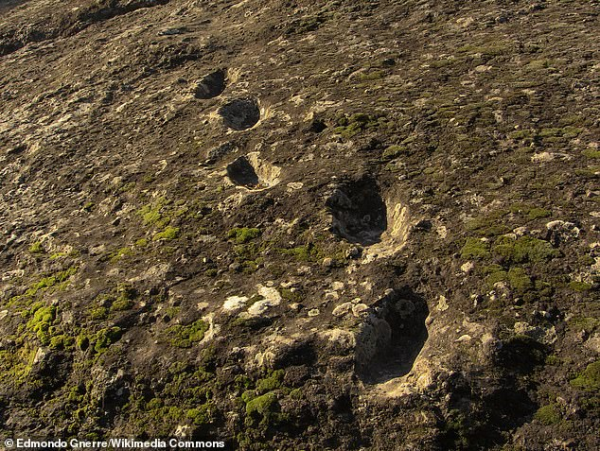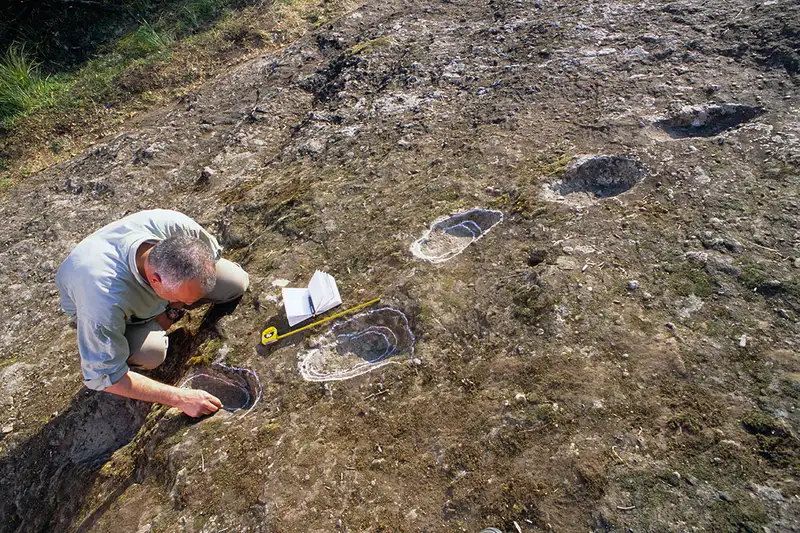Footprints Made by Neanderthals who Walked in Lava Hours After Eruption
The ‘ Ciampate del Diavolo ‘ or devils trail, along the Roccamonfina volcano in southern Italy, was made by Neanderthals is the belief of archeologists.
About 81 footprints from at least five individuals can be seen etched in the solid lava and considering the age of the rock, experts believe the group lived ‘before our species existed’.
According to the New Scientist, the prints match the Sima de Los Huesos ‘ hominoid foot, based on size and shape: the ‘ bones ‘ pit ‘ in Atapuerca in northern Spain.
The team also determined that the prints were made hours or days after the violent volcano erupted some 50,000 years ago.
The dense collection of hot gas and volcanic materials, or pyroclastic flow, heated to more than 570 degrees Fahrenheit at the time of the eruption and based on the distance between each step, experts concluded the lava was still soft, but cool enough for a slow walk.

The Roccamonfina is a stratovolcano with a radius of about six miles and is located along the northern Campania coast, at a distance of about 37 miles to the northwest of Mount Somma and Mount Vesuvius.
The volcano has been extinct for more than 50,000 years, but ash from its last explosion is well-preserved in the area.
Archaeologists first discovered 67 footprints in 2001 that headed both down and uphill.
The footprints are located at the top of the Roccamonfina volcano and after further examination, another uncovered 14 prints have been spotted -bringing the total to 81.


The tracks are believed to have been made by a group walking at a speed of 13 feet per second, Forbes reported.
There have been many artifacts uncovered in the surrounding area that leads experts to think this mysterious group frequently visited the area – and could have harvested the rocks to make stone tools.
‘The new data also provide some hints for exploring new hypotheses about the presence of the Palaeolithic hominins in the Roccamonfina territory, although the specific identity of the trackmakers still remains unaddressed,’ the researchers wrote in the journal published in Journal of Quaternary Science.
‘ How many and which species were present at that time in Europe are, indeed, challenging questions, still the subject of open debate.





